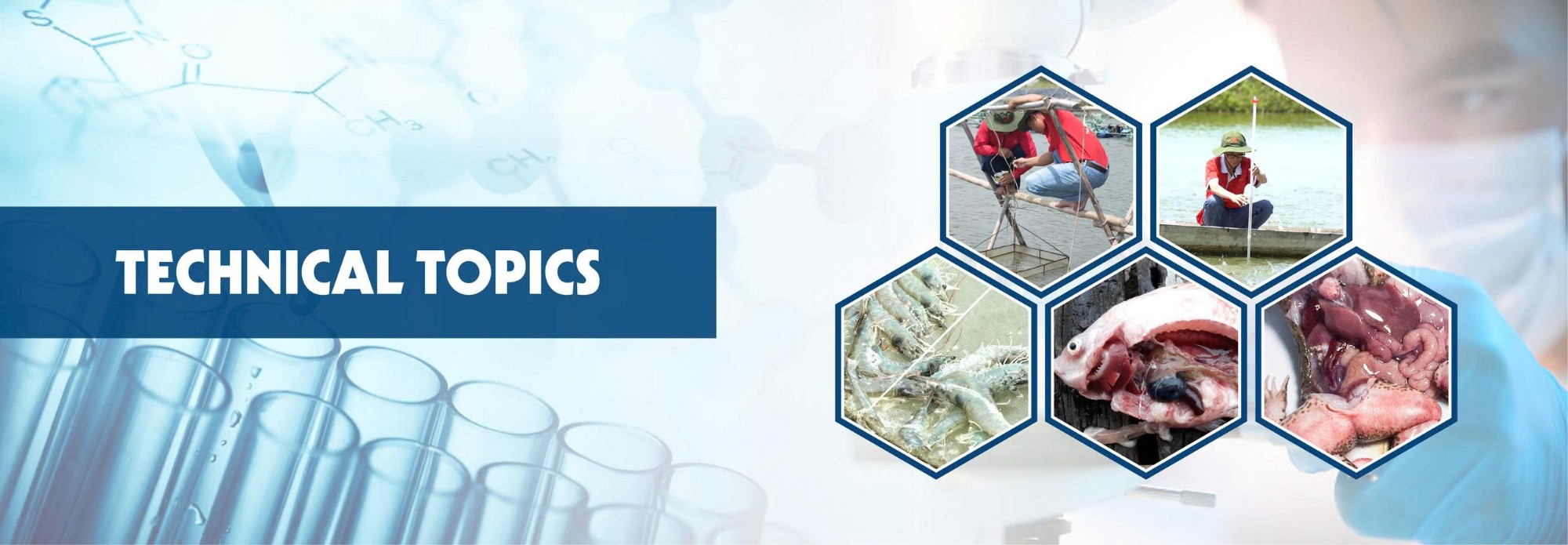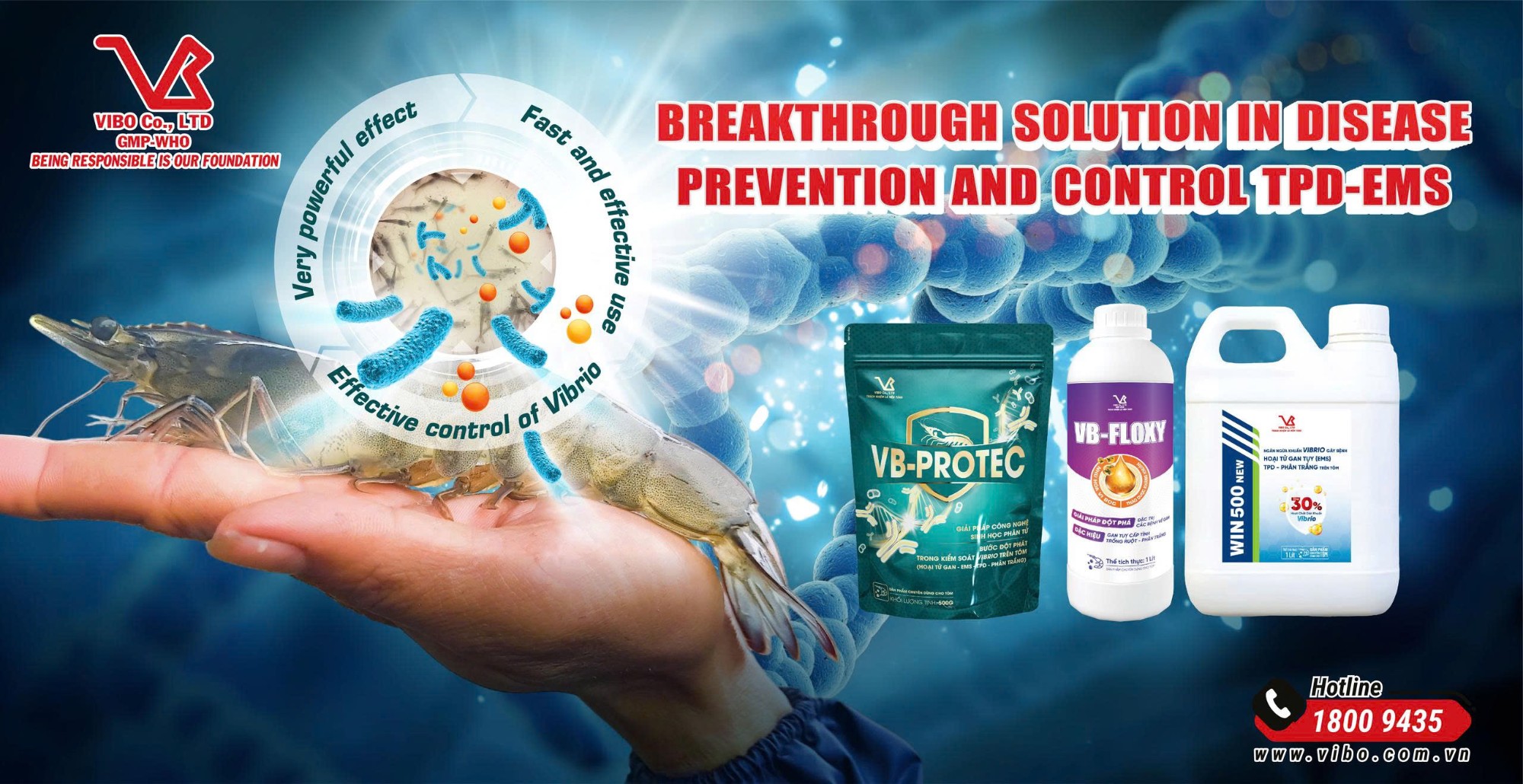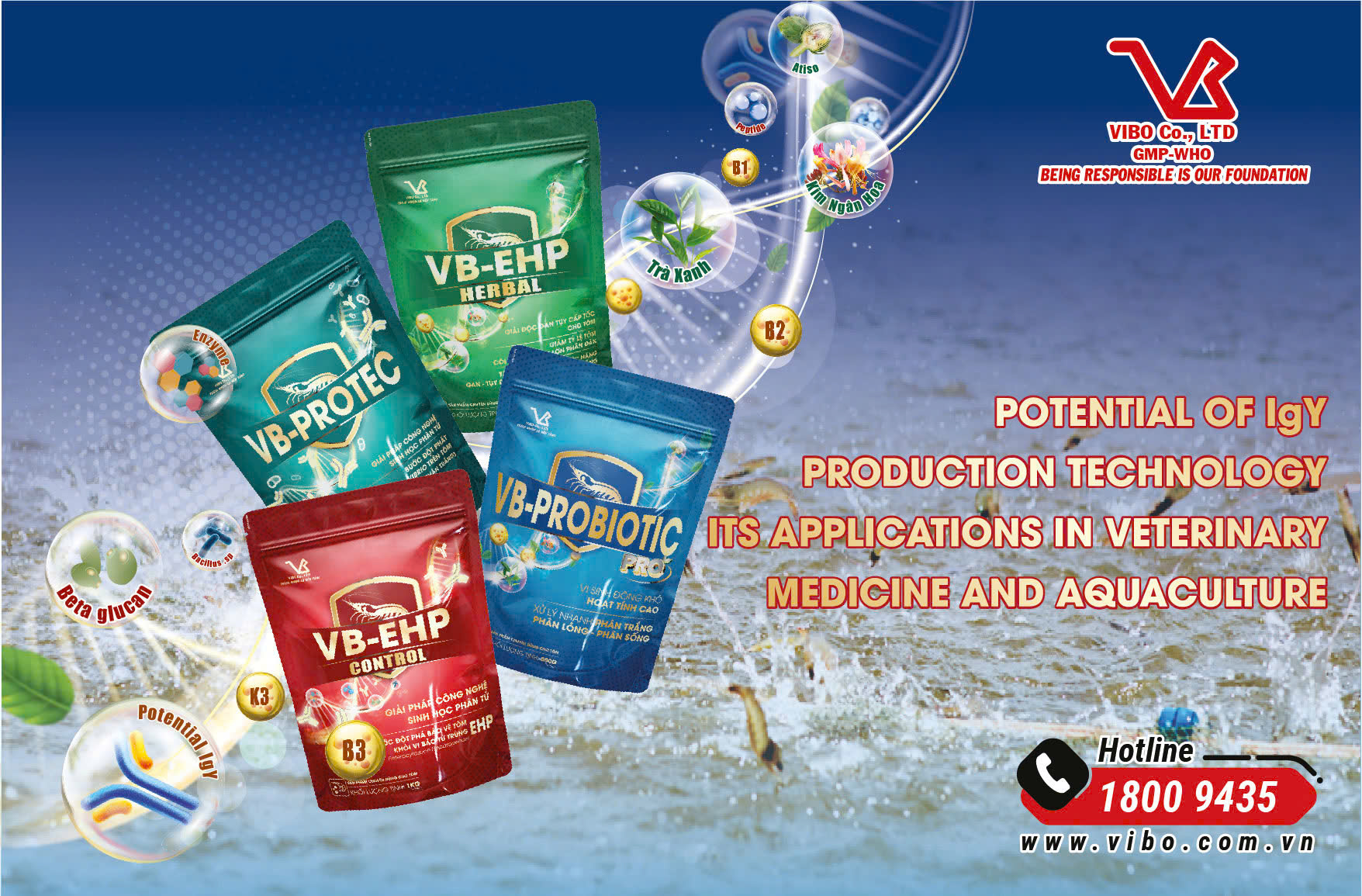
Technical Topics
21
THG08
TOXIC GAS MANAGEMENT IN SHRIMP POND
To manage toxic gases in shrimp ponds, focus on a two-pronged approach: proactive prevention and reactive treatment. Proactive methods include controlling feed to avoid excess nutrients, ensuring good aeration, and maintaining water quality parameters like pH and alkalinity. Reactive measures involve water exchange, using probiotics, and applying chemicals like lime or zeolites to break down waste and neutralize toxic gases like hydrogen sulfide and ammonia.
14
THG06
SOLUTIONS FOR PREVENTION AND TREATMENT OF INTESTINAL BACTERIAL INFECTIONS IN SHRIMP
The shrimp intestine is one of the most important organs in shrimp physiology. However, due to its simple structure, it is highly susceptible to pathogenic invasion. Intestinal bacterial infections commonly lead to several widespread problems such as segmental gut necrosis, enteritis, white feces syndrome, and empty gut, all of which directly affect productivity and crop performance
03
THG03
PREVENTION AND TREATMENT SOLUTIONS FOR TRANSLUCENT POST-LARVAE DISEASE (TPD) IN SHRIMP
Translucent Post-Larvae Disease (TPD), also known as “Glass Post-Larvae Disease,” is an emerging disease affecting Penaeus vannamei. It was first reported in March 2020 in China and is characterized by extremely high mortality rates, particularly in shrimp at the PL4–PL7 stages. The disease is caused by a highly virulent strain of Vibrio parahaemolyticus, designated VpTPD, which has resulted in severe economic losses—impacting 70–80% of hatcheries as well as shrimp farmers. The disease spreads rapidly and can cause up to 90% mortality within 2–3 days, leading to catastrophic financial losses if not promptly managed.
31
THG05
POTENTIAL OF IgY PRODUCTION TECHNOLOGY AND ITS APPLICATIONS IN VETERINARY MEDICINE AND AQUACULTURE
Immunoglobulin of the yolk is an immune globulin produced by hens to protect chicks during the first weeks of life against emerging pathogens. It is functionally equivalent to immunoglobulin G found in the colostrum of mammals. IgY is a completely natural antibody product. A primary goal of animal welfare is to reduce painful procedures. IgY technology meets this requirement because antibodies are collected non-invasively through egg collection rather than blood sampling, which causes stress and pain in mammals. IgY technology also offers significant economic advantages since raising hens is far more cost-effective than raising rabbits, sheep, or horses for antibody production.
31
THG01
PROTOCOL FOR PREVENTION AND TREATMENT OF ACUTE HEPATOPANCREATIC NECROSIS DISEASE (AHPND) IN SHRIMP
A protocol for preventing and treating Acute Hepatopancreatic Necrosis Disease (AHPND) in shrimp involves biosecurity, farm management, and advanced techniques like phage therapy and probiotics. Prevention focuses on stringent biosecurity to prevent pathogen introduction, while management techniques include regular water changes, siphoning, and careful feed optimization. If the disease is confirmed, treatment may involve disinfecting the pond and its contents, and future efforts are exploring technologies like vaccination and immune enhancement through plant-based compounds.









